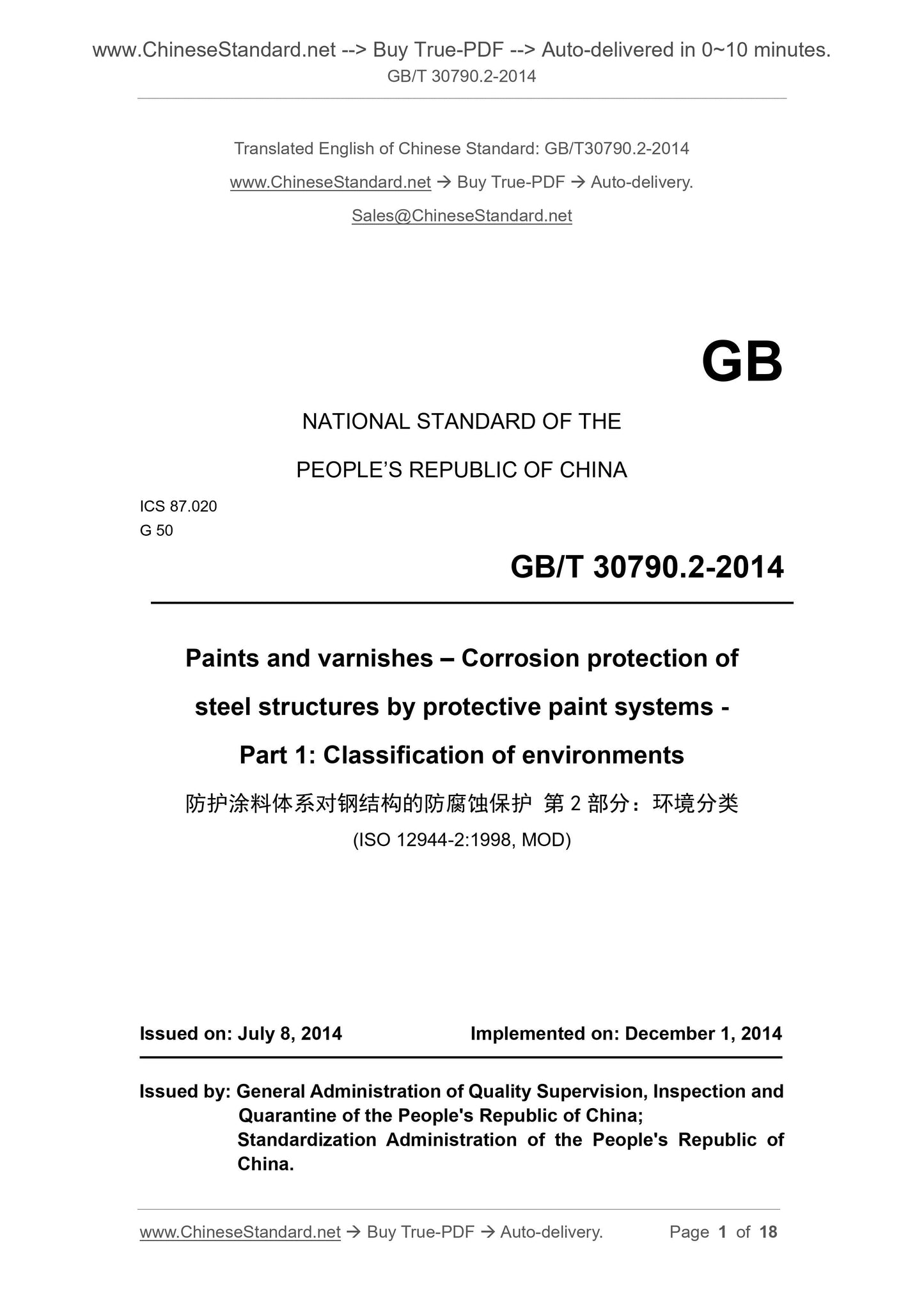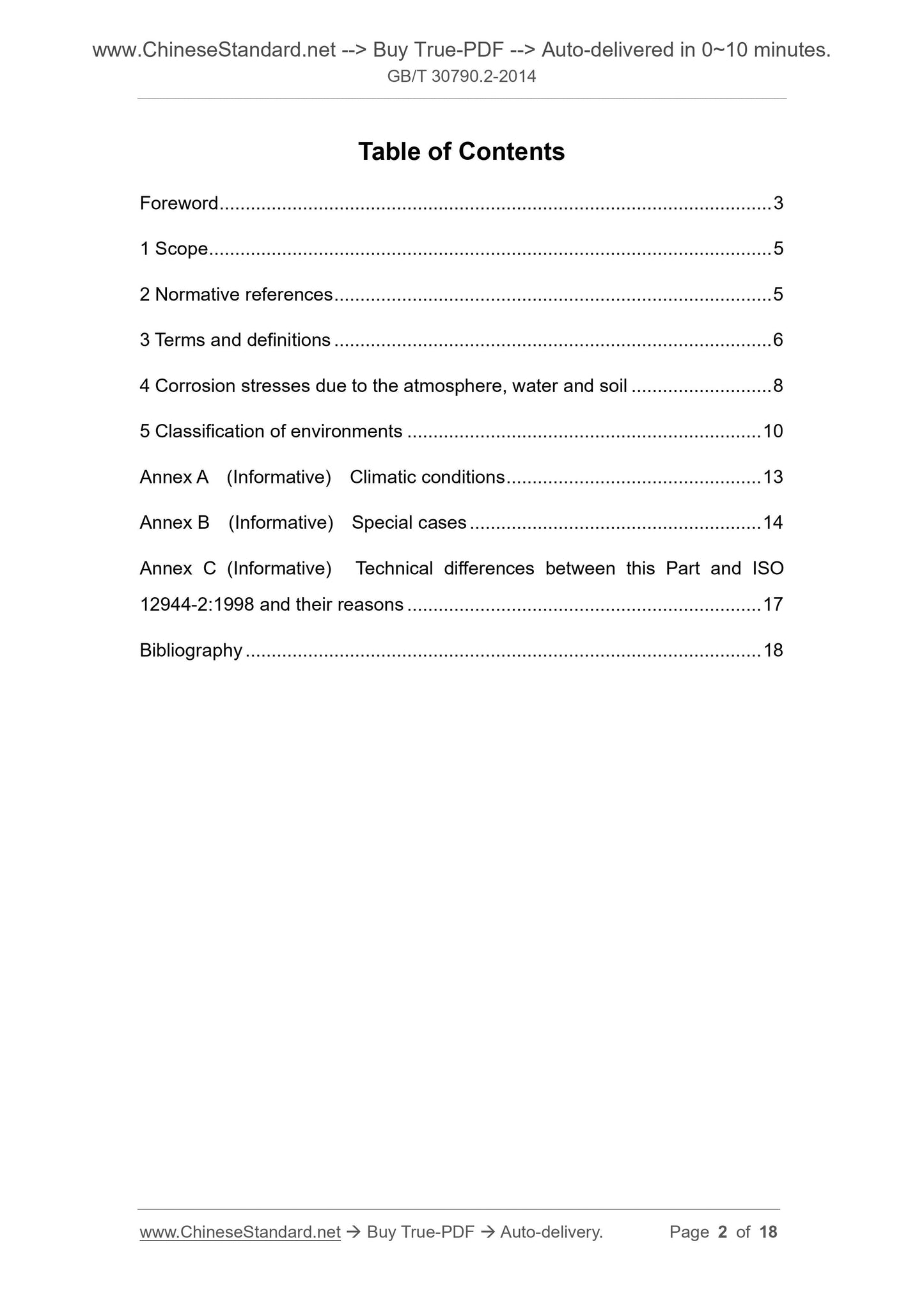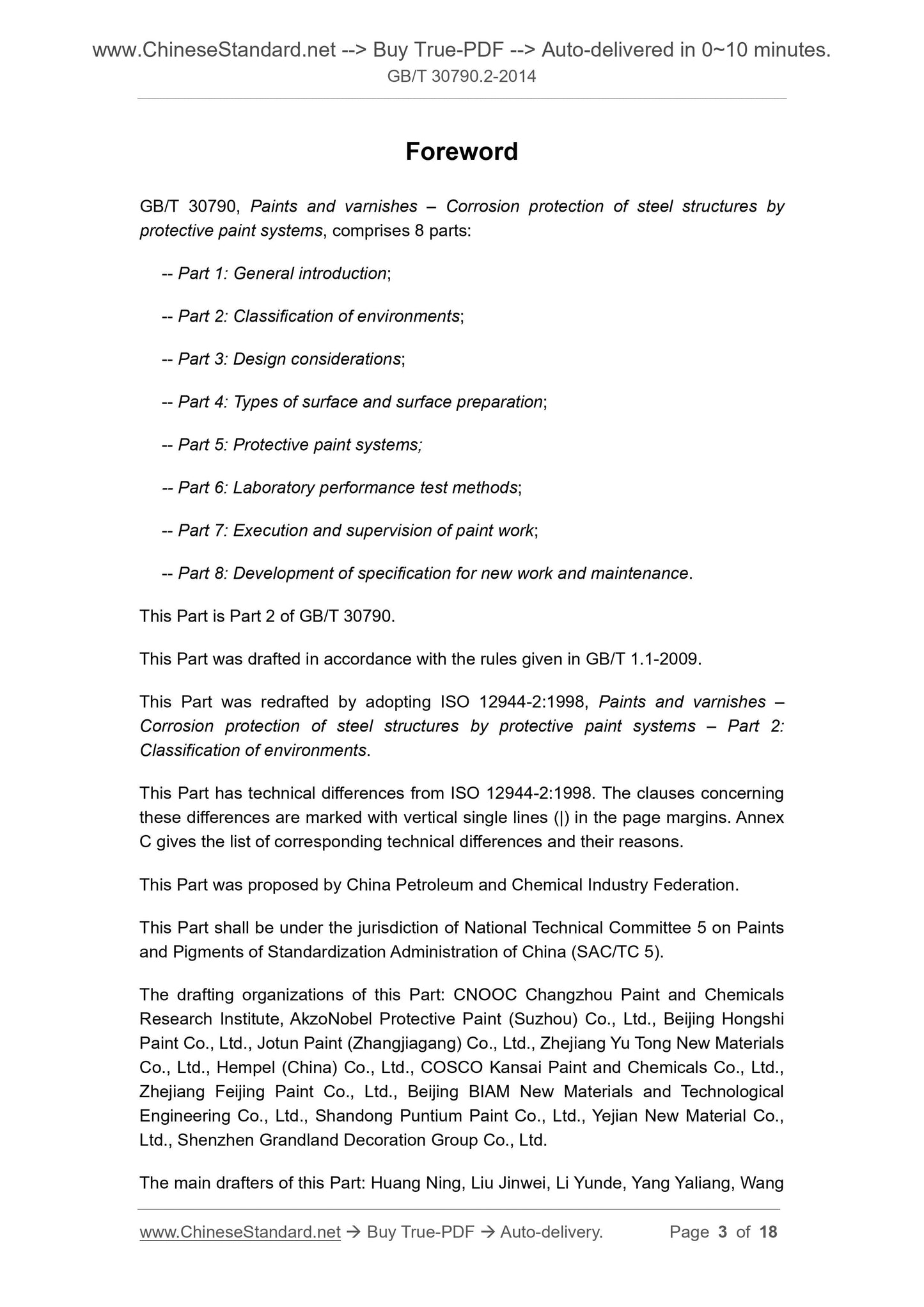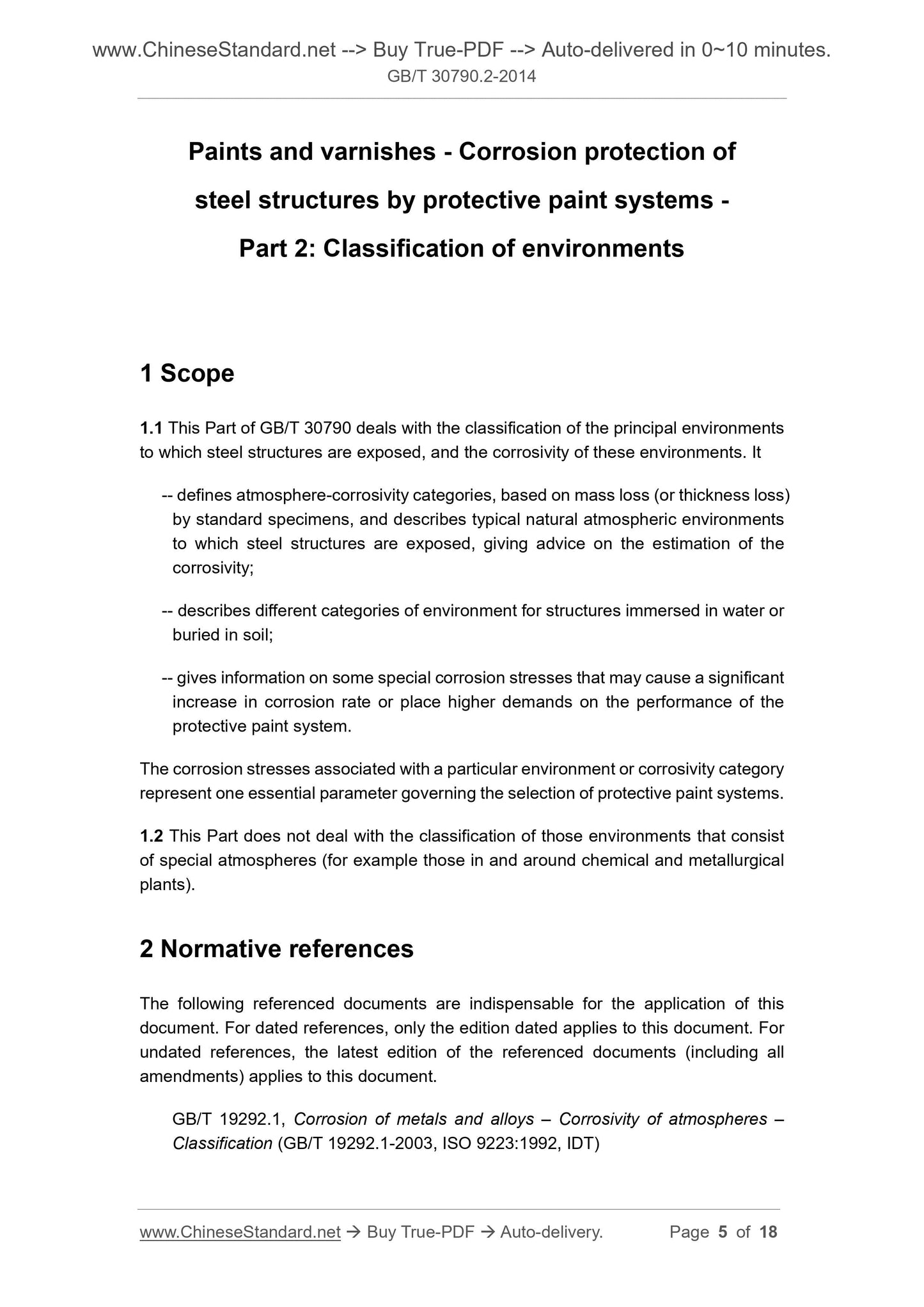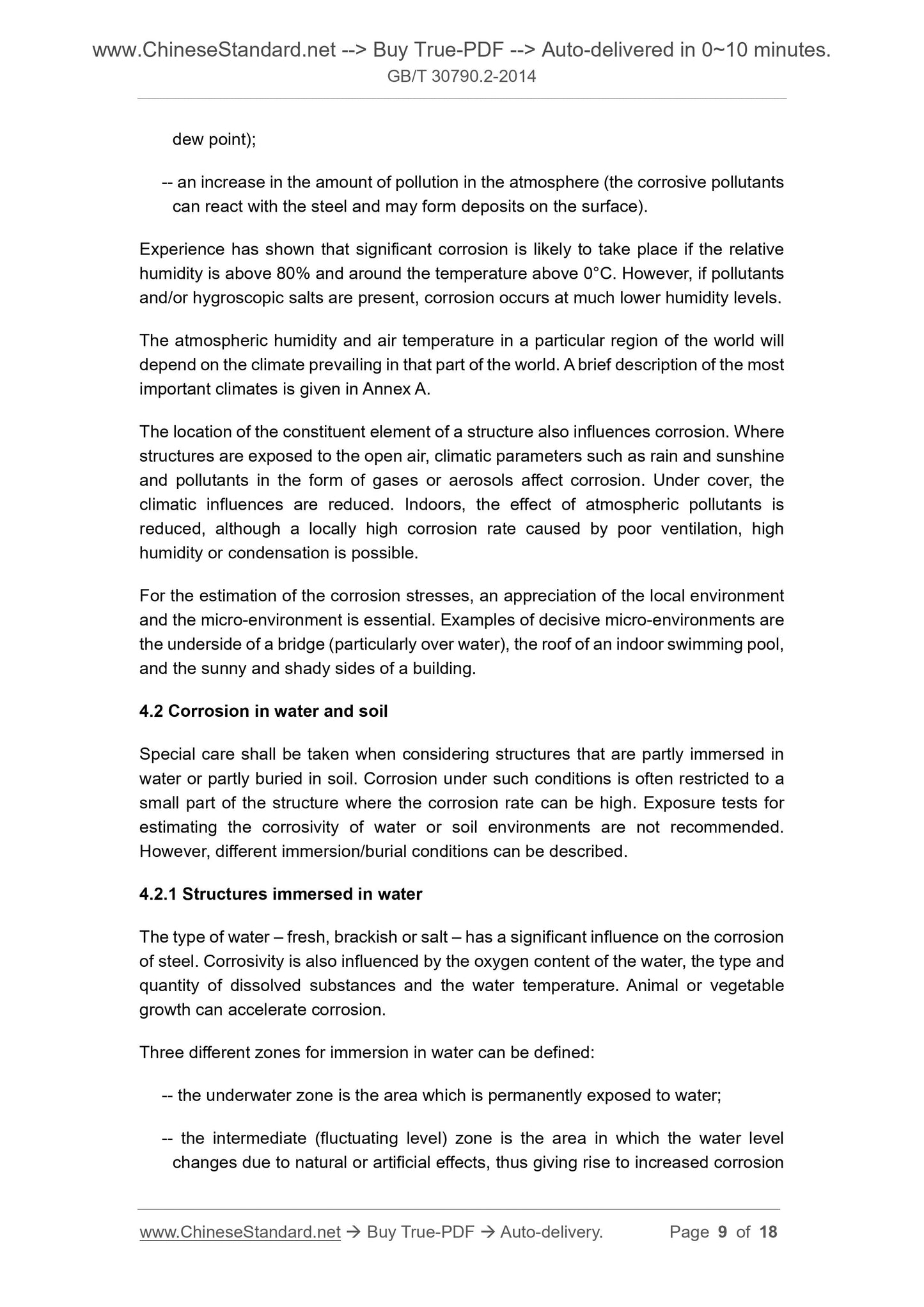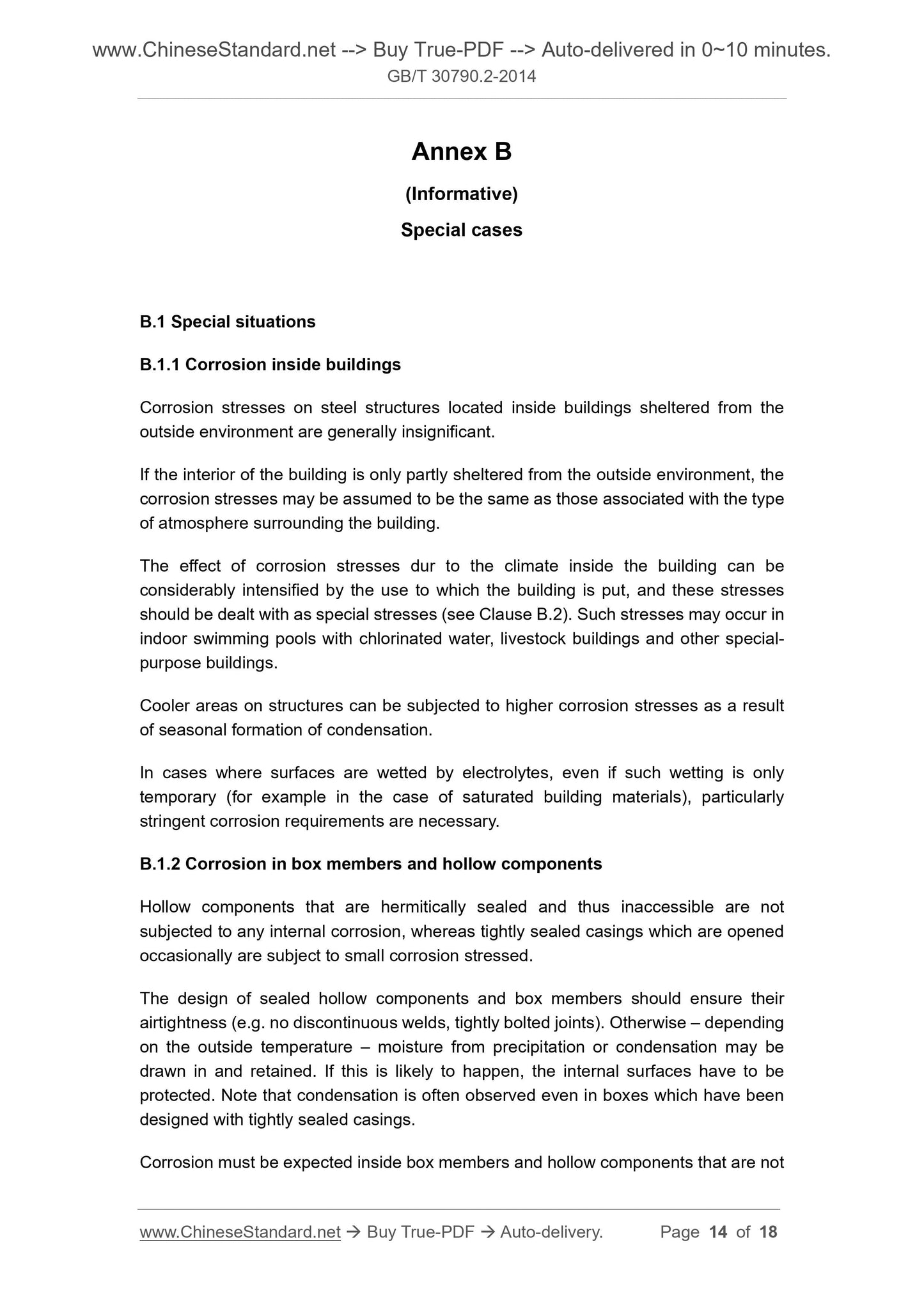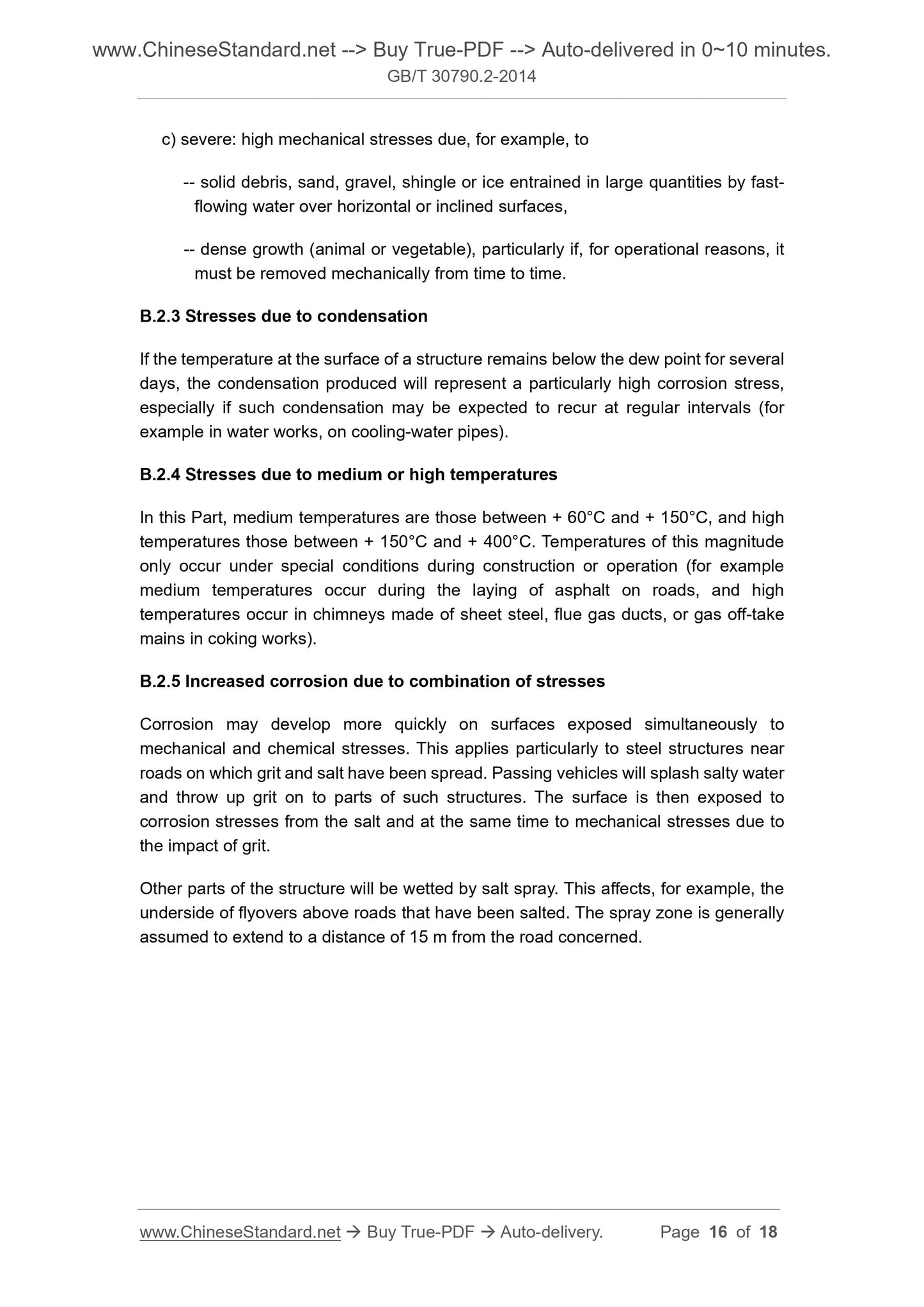1
/
of
7
www.ChineseStandard.us -- Field Test Asia Pte. Ltd.
GB/T 30790.2-2014 English PDF (GB/T30790.2-2014)
GB/T 30790.2-2014 English PDF (GB/T30790.2-2014)
Regular price
$150.00
Regular price
Sale price
$150.00
Unit price
/
per
Shipping calculated at checkout.
Couldn't load pickup availability
GB/T 30790.2-2014: Paints and varnishes -- Corrosion protection of steel structures by protective paint systems -- Part 2: Classification of environments
Delivery: 9 seconds. Download (and Email) true-PDF + Invoice.Get Quotation: Click GB/T 30790.2-2014 (Self-service in 1-minute)
Newer / historical versions: GB/T 30790.2-2014
Preview True-PDF
Scope
1.1 This Part of GB/T 30790 deals with the classification of the principal environmentsto which steel structures are exposed, and the corrosivity of these environments. It
-- defines atmosphere-corrosivity categories, based on mass loss (or thickness loss)
by standard specimens, and describes typical natural atmospheric environments
to which steel structures are exposed, giving advice on the estimation of the
corrosivity;
-- describes different categories of environment for structures immersed in water or
buried in soil;
-- gives information on some special corrosion stresses that may cause a significant
increase in corrosion rate or place higher demands on the performance of the
protective paint system.
The corrosion stresses associated with a particular environment or corrosivity category
represent one essential parameter governing the selection of protective paint systems.
1.2 This Part does not deal with the classification of those environments that consist
of special atmospheres (for example those in and around chemical and metallurgical
plants).
Basic Data
| Standard ID | GB/T 30790.2-2014 (GB/T30790.2-2014) |
| Description (Translated English) | Paints and varnishes -- Corrosion protection of steel structures by protective paint systems -- Part 2: Classification of environments |
| Sector / Industry | National Standard (Recommended) |
| Classification of Chinese Standard | G50 |
| Classification of International Standard | 87.020 |
| Word Count Estimation | 14,156 |
| Date of Issue | 7/8/2014 |
| Date of Implementation | 12/1/2014 |
| Quoted Standard | GB/T 19292.1; GB/T 19292.4; GB/T 30790.1; EN 12501-1 |
| Adopted Standard | ISO 12944-2-1998, MOD |
| Regulation (derived from) | 2014 National Standards Bulletin No. 18 |
| Issuing agency(ies) | General Administration of Quality Supervision, Inspection and Quarantine of the People's Republic of China, Standardization Administration of the People's Republic of China |
| Summary | This standard specifies the classification of steel structures exposed to corrosive environments as well as those of the main environment. Including: - based on the quality loss (or thickness loss) defines the standard sample atmospheric corrosion levels, |
Share
